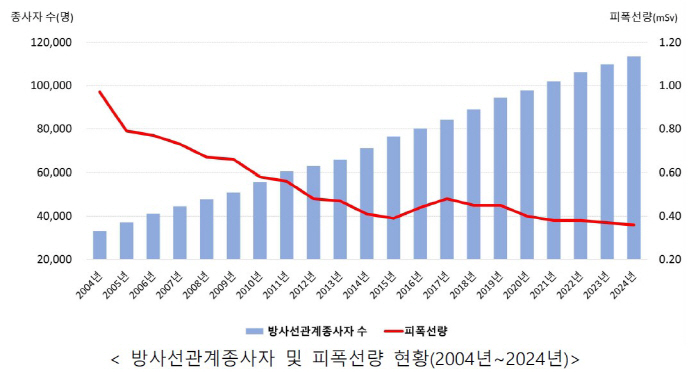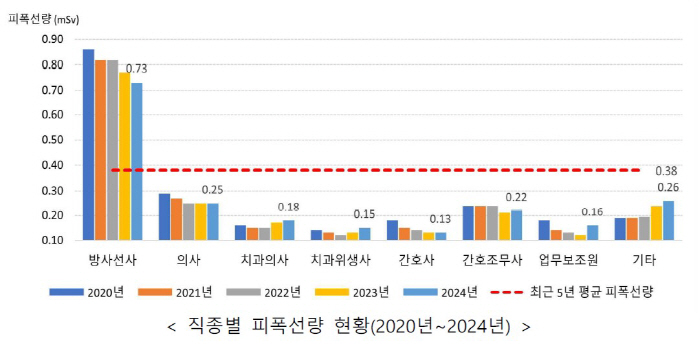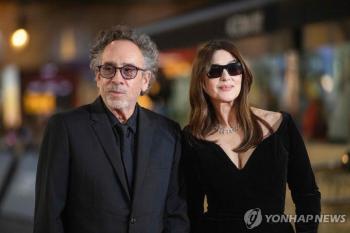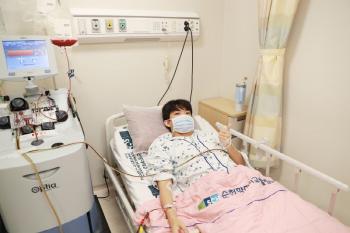Average annual exposure dose per radiation worker, 63% decrease over the past 20 years
Sep 23, 2025
|
In the case of radiation-related workers who are professionally concerned about radiation exposure, radiation exposure doses are measured quarterly, and the Korea Centers for Disease Control and Prevention has analyzed the measurement results every year since 2004 and published an annual report.
According to the "2024 Annual Report on Individual Exposure Doses for Radiation-related Workers in Medical Institutions", the number of radiation-related workers in 2024 was 113,610, and the average annual exposure dose per person was 0.36 mSv (millisieverts). Compared to 2004, when statistical data were first published, the number of radiation-related workers increased 3.4 times (33,000 in 2004), but the exposure dose decreased by 63% (0.97 mSv in 2004).
Looking at the current status of the past five years (2020-2024), the number of radiation-related workers increased every year in 2024 by 16% compared to 2020 (97,801 in 2020 → 113,610 in 2024) and the annual exposure dose per person decreased by 10% (0.40 mSv in 2020 → 0.36 mSv in 2024).
|
Radiologists handle diagnostic radiation generators and perform medical radiation tests directly, so exposure doses are relatively higher than other occupations, but they have decreased by more than 15% over the past five years (0.86 mSv in 2020 → 0.73 mSv in 2024). During the same period, exposure doses for doctors, nurses, nursing assistants, and work assistants also decreased slightly, and exposure doses for dentists, dental hygienists, and other occupations increased.
Radiation is necessary for the diagnosis and treatment of diseases, but unnecessary overexposure can cause serious side effects such as cancer, so radiation workers must comply with safety rules such as wearing defense equipment such as personal exposure dosimeters and radiation defense aprons properly.
In order to reduce radiation exposure doses for radiation-related workers, the Korea Centers for Disease Control and Prevention provides advance notice to workers with high exposure doses, and requests medical institutions with more than two notice of caution to prevent recurrence. It also operates an education system for radiation safety management officers.
Director of the Korea Centers for Disease Control and Prevention Lim Seung-kwan said "In order to create a safe medical radiation environment, it is important to improve awareness of radiation workers and comply with safety management rules."The Korea Centers for Disease Control and Prevention will do its best to promote and manage exposure doses to improve awareness of radiation-related workers" he said.
This article was translated by Naver AI translator.















